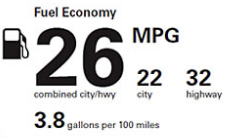Understanding Time in Range
Tuesday, December 15, 2020 - 15:46
Today, we invited Medtronic Medical Affairs Manager, Kevin Kelleher, MSHI, RN, CDCES, who is also a father to a child living with type 1 diabetes, to break down what Time in Range is and why you should care about it.
As a car enthusiast, I often use cars as examples when explaining clinical terms. If you’re in the market for a new car, you may pay attention to a car’s fuel economy. Typically, the fuel economy will be expressed as a combined average as well as an average for city or highway driving. Most cars will show a higher miles per gallon for highway than city driving. This is because your engine must work harder to stop and start and change speeds frequently when you’re on city streets.

 This requires more gas and ultimately reduces gas mileage not to mention causes more wear and tear on your car. The fuel economy shown on a new car sticker, is like A1C to a person living with diabetes.
This requires more gas and ultimately reduces gas mileage not to mention causes more wear and tear on your car. The fuel economy shown on a new car sticker, is like A1C to a person living with diabetes.
For over forty years, A1C has been the “gold” standard for measuring blood sugar control for people living with diabetes. One way to think of A1C is that it is the average of a person’s blood sugars over the past ninety days. The American Diabetes Association recommends that adults with diabetes should have an A1C less than 7%, which is roughly an average blood sugar of 154 mg/dL. A1C, like a car’s fuel economy, misses the ability to identify day-to-day changes in blood sugar. An average blood sugar of 154 mg/dL could mean that a person’s blood sugar fluctuates from 138 mg/dL to 170 mg/dL or 34 mg/dL to 274 mg/dL or anywhere in-between. If you and your healthcare professional are working to meet only a goal A1C of 7%, you could be missing potentially dangerous high and low blood sugars.

In 2006, continuous glucose monitoring (CGM) technology became available and is quickly becoming a “must have” for those living with type 1 diabetes. CGM allowed people to see their glucose levels all day long, rather than just at 4-6 varying points throughout the day. This allowed them to see all the highs and lows between fingersticks that were going unnoticed. Along with CGM came a new way to measure diabetes control called Time in Range (TIR). TIR gives insight into where A1C is lacking, with the ability to identify day-to-day changes in blood sugar. So instead of focusing on an average that could include highs and lows that just happen to average out, now people could see how much time they’re spending in that healthy, feel-good range. In 2019, an international panel of individuals with diabetes, clinicians, and researchers met and established goals:
- Greater than 70% of time should be spent between 70 mg/dL and 180 mg/dL
- Less than 25% of time should be spent higher than 180 mg/dL
- Less than 4% of time should be spent below 70 mg/dL
- Less than 1% of time should be spent below 54 mg/dL
For the first time, people living with diabetes and healthcare professionals not only had a tool to measure what diabetes management looks like, but also a target to strive for.
Managing blood sugars by focusing on the time spent “in range” versus the overall average can improve not only the quality of life but the quantity of life for people living with diabetes. Just as technology has improved fuel economy for cars, technology is improving Time in Range for people living with diabetes. CGMs with predicative alerts can help people act before moving outside of target range. Additionally, sharing data with your healthcare professional can result in a team approach to staying between the lines!
We hope this information helps you think a little differently about your diabetes management and helps you feel a little better throughout your day. Feel free to bring this up at your next doctor appointment and see what they say!
IMPORTANT SAFETY INFORMATION
Continuous Glucose Monitoring systems are limited to sale by or on the order of a physician and should only be used under the direction of a healthcare professional familiar with risks associated with the use of these systems. The information provided by CGM systems is intended to supplement, not replace, blood glucose information obtained using a home glucose meter. A confirmatory fingerstick is required prior to making adjustments to diabetes therapy. Insertion of a glucose sensor may cause bleeding or irritation at the insertion site. Consult a physician immediately if you experience significant pain or if you suspect that the site is infected. Please visit www.medtronicdiabetes.com/importantsafetyinformationforadditionaldetails.





